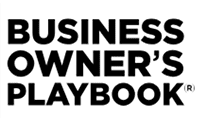I’m writing this column in March 2025, and looming ahead is what I like to call ‘Tax Armageddon’ which is my tongue-in-cheek way of characterizing the upcoming tax battle royale that’s about to take place in Congress. That’s because most of the major provisions of the 2017 Tax Cuts and Jobs Act (TCJA) are scheduled to expire this year, and both Republicans and Democrats will be debating which, if any, of these provisions could become permanent, or at least extended. I predict a resolution by the summer.
But a quarter of the year is already behind us and, with taxes being such a major part of our costs, it’s still important to make some moves now. I’m listing below ten things you can do that will help to minimize your taxes, even considering the tax law changes that are inevitably going to happen.
Invest in capital equipment
It used to be that you could deduct 100% of the first year’s cost of capital equipment – now up to about $1.25 million – and which includes machinery, vehicles, furniture and even technology. But this first year deduction has fallen to only 40% this year and is scheduled to drop in half next year. However, I’m expecting this provision to be fully restored as part of the TCJA discussions. As long as you put the equipment into service you can take the deduction allowed in the first year. Regardless of what happens in Congress, it’s still a good move and a great tax deduction for future value.
Maximize your retirement contributions
The maximum 401(K) contribution this year (employee and employer) is $70,000, with significant additional ‘catch-up’ contributions that can be made by older employees and business owners. Make your best efforts to contribute as much as you can, so that you can not only benefit from a lower taxable income this year but watch your savings grow tax free until you’re required to distribute (and be taxed on) these amounts (the minimum distribution age will ultimately go up to 75 years.) If you’re running a small business where you and maybe your spouse are the only employees, consider setting up a Cash Balance Defined Benefit Plan where you can take as much as a $265,000 deduction.
Setup a 401(K) plan
The 2022 SECURE Act provides generous tax credits for employers to offset the costs of setting up a 401(K) plan and even offers tax credits for eligible employers that match their employees’ contributions. A 401(K) plan is not only a great benefit for attracting and retaining good workers, but also an excellent way for you to reduce your taxable income this year and save money for retirement, as long as your employees are doing the same.
Maximize your Roth contributions
A Roth 401(K) allows you to save up to $23,500 of your after-tax income with the benefit being that you don’t get taxed on any growth in your portfolio and you’re not required to distribute the money at a later age. If you’re younger and you put this money away now, it’s a great way to experience tax-free appreciation over a number of years. Contributions begin to be limited once individual income reaches $150,000 and until they are ultimately phased out.
Clean up your balance sheet
It’s OK to take a deduction for when you write off a bad receivable or an older inventory item, but you must dispose of both. Once a year, take a hard look at who owes you money and if the amounts are more than 120 days, write it off. The same goes for inventory: take a walk around your business and physically remove inventory items that you’re carrying and take the deduction too. This not only saves you on taxes but reduces the overhead you’re incurring by carrying a non-productive asset.
Employ your kids
The individual standard deduction this year is $15,000 (this amount is set to be halved if the TCJA fully expires this year). Regardless of what happens (and I expect the current amount to survive), it means that if you pay your kid (actually, any kid, you don’t have to be related) up to that amount, and assuming they don’t have any other income, they basically receive that income tax free, and you get a tax deduction. There are employer taxes – social security, Medicare, state taxes – that may be incurred. But this is a great way for kids to earn mostly tax free money after school or on holidays and save for college.
Sell your losing stock
The stock market has been tracking down so far this year, but there is some benefit in that. In what experts call “tax loss harvesting,” you can offset the losses of any stock you sell against the gains from other stocks, and if your losses are as much as $3,000 above the gain you can take that deduction on your individual return. You can even take advantage of a “wash sale” where if you still want to hold a losing stock for the longer term because you think there will be upside then sell it, take the loss, wait 30 days and then buy it back.
Compensate with healthcare
Instead of giving your employees a raise this year, consider contributing more to their healthcare plan. Why? Because a straight out raise will be taxed to the employee – and you’ll pay employer taxes too. But healthcare contributions are non-taxable. So, the employee will get more of a benefit (and still a higher net paycheck after your increased contribution) and you get the advantage of a deduction and not having to pay more employer taxes.
Leverage your property
Many of my clients – like the national average – who own businesses are over the age of 50. They’ve built up a lot of value in their companies over the years but the biggest asset they always have is their property. So do what the one-percenters do: get a loan against that property and have your business pay back the loan – assuming it can. Why? The company gets a tax deduction for the interest, and you can take the proceeds as a non-taxable distribution. Yes, any future sale of your business will need to offset the loan liability, but you can enjoy this income now without paying taxes.
Start an ESOP
As business owners get older, many are turning to their employees as a potential exit from their companies. Which is why Employee Stock Ownership Plans have become so popular. There are many pros and cons to this strategy but you can’t argue the tax benefits. For one, the loan payments to a bank who provides the funds to buy out the owner are 100 percent deductible by the company. More importantly, however much the entity is owned by the employees, that income allocation is non-taxable. Yes, non-taxable! When you hear about companies that are 100% employee owned, they’re literally paying no taxes.






Thank you for this information! Much needed for a new small business owner
Add me to the list Ruffino’s school of pool LLC and consulting
Hi Mariano! You can register your small business to be included in our “Shop Local Directory” by visiting this link: https://www.bighartforsmallbusiness.com/form/small-business-registration
Good Article